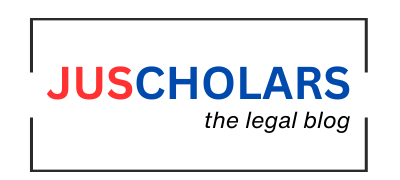The Ministry of Electronics and Information Technology (MeitY) issued an advisory dated 26 December 2023 to all the firms and social media platforms to follow the due diligence while they perform their duties. This directive is to mitigate the misinformation and mainly to curb the deep fakes.
The intermediaries must make certain that the content which is prohibited under Rules 3(1)(b) of the IT (Intermediary Guidelines and Digital Media Ethics Code) Rules, 2021 are prominently published on their respective websites or mobile based applications. The rules and regulations including the privacy policy and user agreement must be communicated to the persons in the language of their choice.
The advisory also directed that the intermediaries must see to it that their users are refrained from hosting, displaying, uploading, modifying, publishing, transmitting, storing, updating or sharing any information which the user does not have rights to do so, or any obscene material, which is harmful to the children, or anything which infringes other individual’s trademark, copyright, patent or other proprietary rights.
It also emphasized that Rule 3(1)(b)(v) where it explicitly prohibits the dissemination of misinformation and patently false information. All the intermediaries were asked to remove such content promptly from their platforms once they are notified. The content must be removed within 36 hours of such reporting and well within the stipulated timeframe expeditious action must be taken under the IT Rules, 2021.
The firms must make sure that the users are aware of the various penal provisions of the IPC, 1860 (BNS, 2023) and IT Act, 2000 and other laws in case of violation of the Rule 3(1)(b). Further the firms and platforms are under the obligation to inform the law enforcement agencies about the legal violations related to the 11 listed harms or prohibited content under the rule. If in case, where an intermediary fails to observe these rules then they shall be liable under the provisions of IPC.
The advisory also mentioned the significant challenges posed by deep fakes, calling all the online platforms to take decisive actions against the spread of deep fakes.
Deep fakes are created using AI deep – learning technology which is a type of machine learning that uses multiple levels of processing. It is a synthetic media creation which uses AI to make it appear as if someone else is in image, video, or audio recording.
In continuation to the advisory, the MeitY issued another one on 1 March 2024, regarding the misinformation and deep fakes. If any intermediary uses a software/ other computer resource permit and facilitates creation/ generation/ modification of synthetic data that can be used as misinformation or deep fake, then such synthetic data should be labelled/ embedded with a permanent unique metadata or identifier, in a manner that such label, metadata or identifier can be used to identify the source and the creator or first originator of such misinformation/ deep fake.
However, there have been several investigations related to the moral consequences of deep fake content, including matters like breaches of privacy, cyberbullying, slander, identity theft, and harassment. Because of the widespread nature of deep fake news, audiences might form feelings of misleading beliefs. They have the capability to be employed in a harmful way to disseminate misinformation or to slander individuals. Deep fake material can circulate quickly on social media and other internet platforms, rendering it difficult for victims to manage the spread of inaccurate information or to vindicate themselves.
India’s unfortunate reputation as the disseminator of misinformation is associated with its elevated level of Internet usage and the increasing trend of social media involvement. Deep fakes may be employed to generate explicit or harmful content utilizing the likenesses of people without their permission, resulting in breaches of privacy and possible damage to both personal and professional reputations.
Section 66E of the IT Act of 2000 is relevant in situations involving deep fake offenses that include the recording, sharing, or transmitting of a person’s visual representations through mass media, thus violating their right to privacy. This violation is subject to a possible punishment of imprisonment for a term of three years or a financial penalty of ₹2 lakh. Another significant clause within the IT Act is Section 66D. It outlines the legal grounds to charge individuals who use communication devices or computer resources with harmful intentions, trying to mislead or impersonate another individual, thus subjecting them to the possibility of jail time for three years and/or a fine of up to ₹1 lakh. These specific sections of the IT Act can be applied to hold responsible those individuals involved in deep fake cybercrimes within the domain of India.
The use of deep fakes for spreading misleading information, undermining the Government, or provoking hatred and discontent against the Government is an issue of significant worry and has the ability to produce far-reaching effects for society. The spread of incorrect or misleading information has the power to cause confusion and erode the confidence of the public.
The responsibility of intermediaries could also be called into question, as these intermediaries act as the platforms where the deep fake content is uploaded and thus are subject to the regulations specified in Section 79 of the Information Technology Act, 2000. According to this provision, the intermediary is authorized to eliminate the content in question once they become aware of its existence or upon getting a judicial order. However, in the instance of Myspace Inc. v. Super Cassettes Industries Ltd (2017), the Court decided that in cases involving copyright infringement, the intermediaries are required to remove the infringing material upon receiving a notice from private parties, even if a Court order is not expressly provided.
Indian government is actively developing stricter rules to address the deep fakes more exhaustively. To address the deep fakes related privacy violations, government should strengthen the data protection and privacy laws and update the laws and regulations regularly.
References
- https://pib.gov.in/PressReleaseIframePage.aspx?PRID=1990542#:~:text=On%2017th%20November%2C%20the%20Prime,and%20amended%20in%20April%202023
- https://digitalcommons.usf.edu/cgi/viewcontent.cgi?article=2245&context=jss
Author: Harini.S, 2nd year LL.B student, at Sathyabama Institute of Science and Technology







